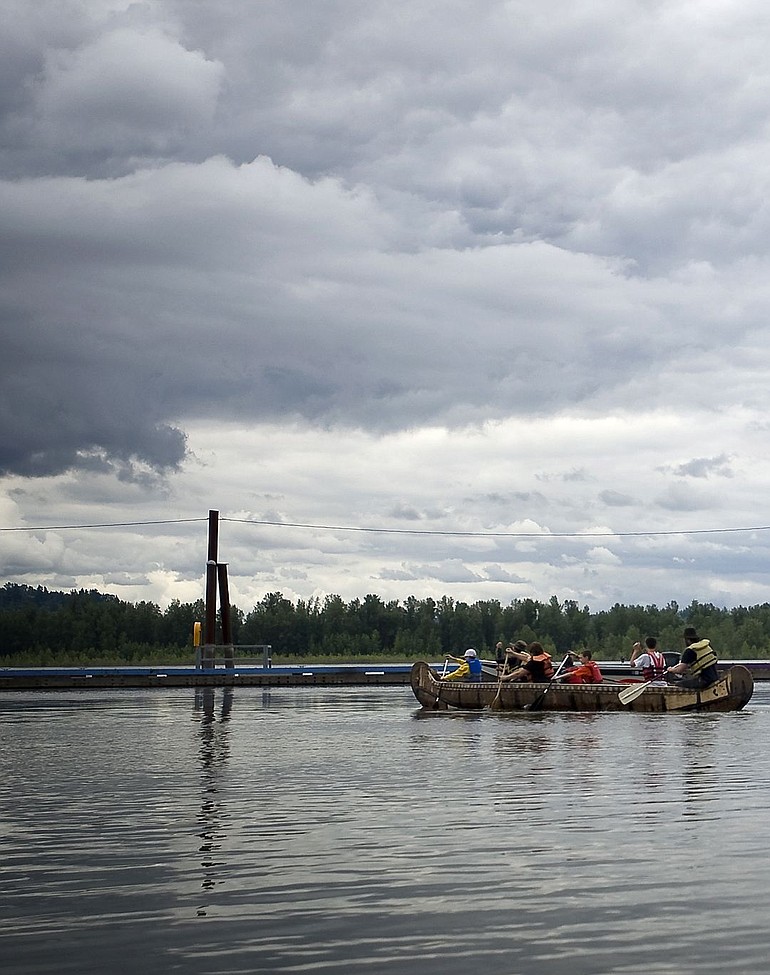WASHOUGAL — People got to see the familiar waters of the Columbia River from a new perspective Thursday.
And that new perspective was provided by a couple of designs that are thousands of years old.
A group of paddlers heading toward the Pacific Ocean stopped at the Port of Camas-Washougal to share their up-close-and-personal view of the river. Local residents got a chance to see what the water looks like from a traditionally built log dugout, or a birch-bark canoe.
The rides were provided by members of Voyages of Rediscovery, an environmental-education program.
Members are paddling from Beacon Rock to Astoria, Ore. — one of two groups on the river right now to observe the 200th anniversary of David Thompson’s mapmaking voyage down the Columbia.
“The Columbia River belongs to everybody,” said John Zinser, one of the Rediscovery voyagers from the eastern Washington town of Chewelah. But not many people get to see it from river level.
Zinser is one of the people who built the 24-foot birch-bark canoe by hand a few years ago at Lake Temagami in northern Ontario. The group talked to the local First Nations band — the Canadian equivalent of a tribe — Zinser said, and, “we got their permission.”
The group did the work with knives, axes and saws.
Power tools were not needed, which was just as well, Adam Wicks-Arshack said.
“We were 30 miles from a road,” he said.
The design came from a photograph of a canoe; much of the work was on-the-job training.
“You mess it up, and you do it again,” Wicks-Arshack said.
No screws or nails went into the canoe; the split cedar ribs and other wooden frame components are held together by wooden pegs. The pieces of birch bark were sewn onto the frame with strands of spruce root.
“We spent four days with five people stitching all day long,” Wicks-Arshack said.
They did make one modern accommodation in sealing the seams along the bark panels. It was the wrong time of year to collect pitch, so they sealed the seams with roofing tar, Zinser said.
The dugout that also provided rides Thursday started as 5-ton log. Adzes were used to chip the log down into a 1,000-pound watercraft.
The group plans to reach Astoria on July 11.
The second group of paddlers on the river is the 2011 David Thompson Columbia Brigade. They’re scheduled to be in the Tri-Cities this weekend and plan to reach Vancouver in about 10 days.




